PinotFile: 9.46 August 25, 2014
|
Charles Heintz Vineyards: Getting to Know Winegrower Charlie Heintz and the Pinot Noir, Chardonnay and Syrah from His Very Special VineyardThis article is the second in a series of in-depth profiles of distinguished Pinot Noir vineyards in California and Oregon. The Charles Heintz Vineyard was chosen for its record of producing consistently high quality Pinot Noir and Chardonnay over multiple vintages by several winemakers. At this time, there is no classification of vineyards in North America, and there is no established nomenclature to signify levels of quality such as found in Burgundy, but the featured wineries in this series certainly could be deemed “Grand Cru.” Charlie Heintz has received considerable well-deserved attention recently. At the recent West of West Wine Festival in Sebastopol sponsored by the West Sonoma Coast Vintners, an organization Charlie belongs to, one of the seminars was focused on Charles Heintz Vineyard Chardonnays. In July, Charlie was in the Grape Radio studio and a spirited conversation with him about viticulture was featured in a podcast that is available for listening at www.graperadio.com (show 369). I spent a sunny morning with Charlie in May at the Charles Heintz Vineyard near the town of Occidental. Bloom and very early berry formation (set) was evident and the heady aroma of grape blossoms filled in the air.
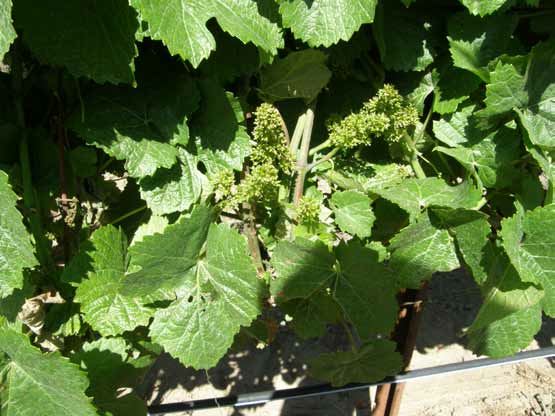 At bloom, which lasts a week or two, the vine’s buds swell and floral clusters appear. The small green bumps that are a grapevine’s flower do not have petals. During bloom, there is a distinctive scent in the air described as sweet or spicy, derived from the pollen grains released into the air from the opened flowers. It is the pollen that fertilizes an egg which then develops into a pea-sized berry. According to Andrew Walker, Professor of Viticulture and Enology at the University of California at Davis, the aroma does not have any similarity to the aroma or flavor of a specific grape variety that it develops into, and it is not possible to tell a grape variety from the scent of the blossom.
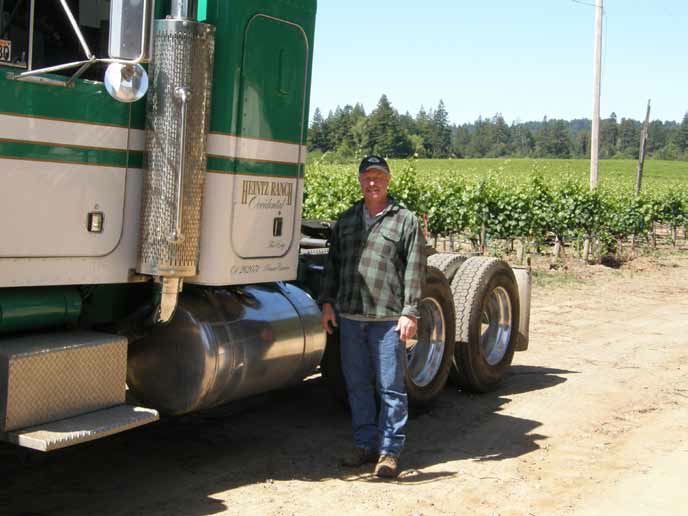 Charlie is a humble third generation farmer that sees himself as one assigned the duty of preserving the heritage of his special property rather than simply being a land owner. His immigrant grandparents settled the land in 1912 and grew some wine grapes initially. With Prohibition, the Heintz family switched to apple trees that occupied the entire ranch and were successfully farmed for over fifty years. An old apple drying barn, constructed by Charlie’s father in the mid 1930s and in use until the late 1950s, still stands on the property as a remembrance of the apple industry. Staggered varieties of apple trees, some of which are at least 90 years old, remain viable on the property. When the apple industry was gradually abandoned in Sonoma County in the 1970s, the apple orchards at Heintz Ranch were converted to grapevines. With little experience growing wine for still wines in this untapped cool climate region, it was unclear whether premium grape varieties for still wine would consistently ripen. The original plantings of Chardonnay at Charles Heintz Vineyard were established with Korbel in mind, Charlie told me, and were intended to be used in sparkling wines. Charlie soon found that ripening of Chardonnay grapes, and later Pinot Noir grapes, was easily accomplished at his vineyard, and this became a precedent for the wave of successful Pinot Noir and Chardonnay growers who later arrived in the Occidental region of the Sonoma Coast. The original Chardonnay plantings were established at Charles Heintz Vineyard in 1982, consisting of a 25- acre block of cleaned-up Wente selection (UCD 4) on AXR1 rootstock in Goldridge sandy loam soil. The vine orientation is east-west because in the 1970s it was taught that this would lessen the threat of soil erosion. Fortunately, the site has no phylloxera issues. Charlie has been working with Ted Lemon for 20 years and Ted set the precedent for quality grape farming in this vineyard. Ted was adamant about reducing yields to achieve quality. His first year at Charles Heintz Vineyard, Ted wanted half the crop dropped to the ground. Charlie’s vineyard foreman was stunned and pleaded Charlie not to do it. Charlie was more accommodating since Ted paid him by the acre rather than tonnage. Charlie says this was the beginning of learning how to farm for the highest quality wine grapes and now all 25 acres of Chardonnay are farmed exactly the same way as Ted’s rows, the only difference being the timing of harvest for each winemaker sourcing the grapes.
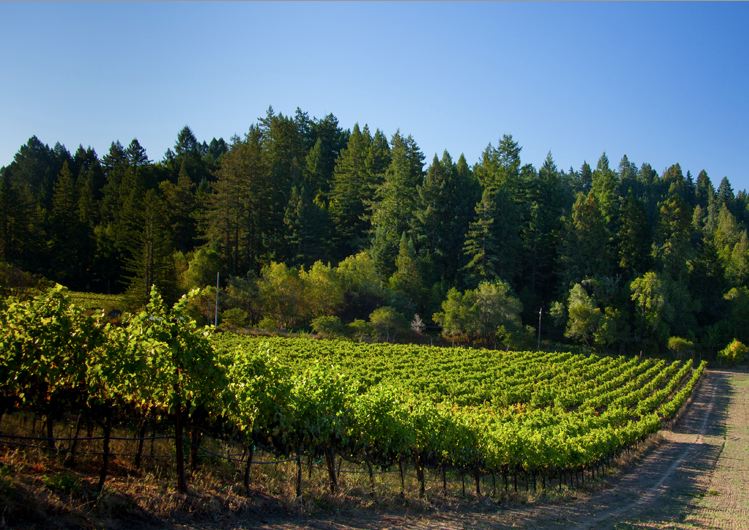 The original 20-acre block of Pinot Noir was planted in 1996 to five clones and selections: Pommard 4, 113, 115, Beringer and Swan. The budwood for the Beringer vines was obtained from the Widdoes Vineyard and the Swan selection budwood came from Tom Dehlinger who had acquired it from Joseph Swan. Originally, all the Heintz Pinot Noir was under a 25-year contract with Jesse Jackson Estates. Dan Goldfield, the winemaker at La Crema at the time, worked with Charlie to arrive at the planting decisions. The vines were oriented in a north-south direction to manage best sun exposure of the fruiting zone. Charlie admits that growing Chardonnay is much easier than Pinot Noir. He remembers that it took him six to seven years to understand Pinot Noir. One of the most important results of his experience was his realization that he had to be extra careful to avoid over exposing the fruit zone to the sun. He also found that he had to configure the vines on the trellis in such a fashion that filtered sun reach the fruit zone. An adjacent pasture was partially planted in 2002 to 3 acres of Swan selection Pinot Noir and 3 acres of Syrah. These blocks are organically farmed. The Pinot Noir is dedicated solely to the Charles Heintz Vineyards Pinot Noir. The Syrah is unique because the plantings include not only the common clones of 174 and 470, but also a Chave selection. The winemaker for Charles Heintz Vineyards, Hugh Chapelle, is a friend of Jean-Louis Chave and was able to obtain cuttings for Charlie’s vineyard. This vineyard is one of only three or four in the United States with the Chave selection of Syrah. Syrah is on the very edge of maturing here, the last grapes picked each year, usually in the first week of November. The Syrah must usually withstand a few annual rainstorms in October, but the large, loose cluster are more resistant to rot that Chardonnay or Pinot Noir. Charlie really beams about his Syrah, telling me, “It is nothing like any other Syrah. It has balance, is soft, elegant and full-flavored, with a natural alcohol percentage less than 14%.” He points out that yields must be limited for Syrah for optimum quality because it can be a prolific producer. There is still plantable acreage in the remaining pasture at Heintz ranch, but Charlie is in a quandary about what to plant. Pinot Noir or Chardonnay would be an easy choice, but he is considering a more challenging option such as Cabernet Franc or Grenache, or possibly white Rhone varieties. What makes Charles Heintz Vineyard so special?
- The vineyard is on the second ridge, a few miles inland from the Pacific Ocean, offering early bud break,
moderate summer days, and the “Indian summer” that makes October the typical month of harvest for Pinot
Noir and Chardonnay. When it is 90ºF in Santa Rosa, it is 80º at Charles Heintz Vineyard.
Charlie Heintz offers wines under the Charles Heintz Vineyards label and Dutch Bill Creek label. The current Charles Heintz Vineyards releases are a 2013 Rosé, a 2012 Chardonnay, a 2012 Pinot Noir, and a 2012 Syrah, all from estate grown fruit and all carrying the Sonoma Coast appellation. Production is only 200 cases for the Chardonnay, Pinot Noir and Syrah. The Dutch Bill Creek wines are more value priced. The Dutch Bill Creek Russian River Valley Chardonnay ($25) is sourced from Heintz Vineyard (50%) and the nearby Searby Vineyard (50%). The Searby Vineyard was planted by Warren Dutton and fruit is also sold to Peay and Migration. The Dutch Bill Creek Russian River Valley Pinot Noir ($29) is a blend of clones from the original 20- acre block of Pinot Noir. The winemaker at Charles Heintz Vineyards was Charlie himself from 1997 to 2002, replaced by Kevin Kelley from 2003 to 2011, and beginning in 2012, Hugh Chapelle. The veteran Chapelle has made a dramatic improvement in the quality of the estate wines and they are now among the best produced from the West Sonoma Coast. The wines are sold on the website at www.heintzvineyards.com and through a mailing list. Tours of the vineyard are available by appointment. The list of wineries who purchase Charles Heintz Vineyards Chardonnay: Amici, Banshee, Brack Mountain (and Pinot Noir), Ceritas, De Loach (and Pinot Noir), Duckhorn Migration, DuMOL (“”Isobel”), Fetzer, Flowers, Freeman Family Winery & Vineyards, Landmark, Littorai, Moone-Tsai, Pearl Morrissette (a Canadian producer making wine in Santa Rosa and sold in Canada), Pierson-Meyer, Von Holt, Williams Selyem, Zepaltas Wines, and Ultramarine Wines (a sparkling wine program by winemaker Michael Cruz with a winery in Petaluma).
 2013 Charles Heintz Vineyards Sonoma Coast Rosé of Pinot Noir 13.5% alc., pH 3.50, TA 0.64, 125 cases, $19. Aged 4 months on lees with no stirring in stainless steel and neutral French oak barrels. Reviewed May 15, 2014. Light pink orange color in the glass. Love the nose that offers a perfume of fresh strawberry, blood orange and complimentary floral array. Interesting and complex, with flavors of red berries, melon, pear and vanilla cream. Slightly creamy in the mouth with a dry, refreshing finish. An exceptional Rosé. 92.
 2012 Charles Heintz Vineyards Sonoma Coast Chardonnay 14.2% alc., pH 3.62, TA 0.52, 200 cases, $45. Aged 11 months on lees in 35% new French oak barrels with lees stirring 1-2 times per month until MLF completed. Reviewed May 15, 2014. Light golden yellow color in the glass. A reference wine for California Chardonnay. High brow aromas of lemon, Granny Smith apple, marzipan and toast lead to flavors of lemon curd, honeyed nuts, toasty oak and a hint of tropical fruits. Polished and seductive, with perfect harmony between California fruit hedonism and bright, mineral-driven acidity. Still invigorating the following day when tasted from a previously opened and re-corked bottle.95
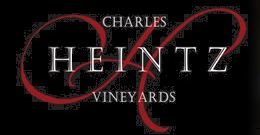
 2012 Charles Heintz Vineyards Sonoma Coast Pinot Noir 13.7% alc., pH 3.68, TA 0.56, 200 cases, $48. Aged 11 months on lees in 40% new French oak barrels. 100% Swan clone planted in 2002. Reviewed May 15, 2014. Moderately light reddish purple hue in the glass. Highly aromatic, with bright scents of perfectly ripened cherry, cranberry and spice. A cherry bomb in the mouth that finds every nook and cranny, saturating the palate and holding tight through a long and mighty finish. Power without weight. Accents of spice, cola and oak add interest. This wine has the whole harmonious package. 94.
2012 Charles Heintz Vineyards Sonoma Coast Syrah 13.8% alc., pH 3.74, TA 0.59, 200 cases, $46. Aged 11 months on lees in 25% new French oak barrels. · Moderately dark reddish purple color in the glass. Inviting aromas of purple and black berry compote with a subtle pine forest and floral scent. Very soft, smooth and elegant on the palate, with driving flavors of blue and purple berries, plum and peppery spice. Mid weight plus in heft with soft tannins, juicy acidity and a lengthy finish of impressive intensity. Score: 93
2012 Migration Charles Heintz Vineyard Sonoma Coast Chardonnay 14.1% alc., 510 cases, $55. · Moderately light golden yellow color in the glass. Shy, but pleasing aromas of dried papaya, guava, apple and oak. Soft and slightly viscous on the palate with flavors of citrus and pear. Elegant and gentle, even a bit shy in fruit intensity. Easy to drink, but lacks a spark of acidity. Score: 89
2011 Williams Selyem Charles Heintz Vineyard Sonoma Coast Chardonnay 13.9% alc., pH 3.51, TA 0.70, $55. Aged 14 months in 25% new French oak. · Moderately deep yellow corn color and clear in the glass. The nose offers aromas of buttered brioche, nectarine, baked apple and grilled pineapple. The wine already has a somewhat aged character, with flavors of lemon, banana, grilled yellow peach and nutty caramel. Smooth and somewhat rich in the mouth, with modest acidic vibrancy. Score: 87
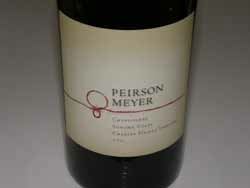 2011 Pierson-Meyer Charles Heintz Vineyard Sonoma Coast Chardonnay 14.2% alc., $55. · Moderate golden yellow color and clear in the glass. Aromas of lemon, pear and ripe pineapple lead to enjoyable flavors of lemon, baked pear and toffee. The balance is spot on, the texture is slightly creamy, and there is a good spark of acidity driving the refreshment. The finish is long with a pleasing honeyed lemon tone. The wine gets better over time in the glass becoming more aromatic with elevated flavor volume. Still great the next day from a previously opened and re-corked bottle. Score: 94
 2010 DuMOL isobel Russian River Valley Chardonnay 13.9% alc., 955 cases, $60. (Reviewed February 27, 2013). Aged 15 months in 40% new French oak barrels. · Light straw color and clear in the glass. Very fresh scent of lemon, grilled peach, pear and savory herbs. Remarkable palate presence with impressive energy and a vibrant lift of acidity on the extended finish. The peach, lemon and nutty flavors are complimented by a touch of caramelized oak, and really grab your attention. Very flavorful, but has the balance and restraint to pair beautifully with food. Score: 94
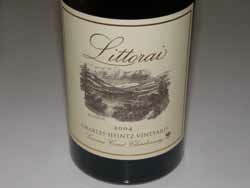 2004 Littorai Charles Heintz Vineyard Sonoma Coast Chardonnay 14.4% alc.. · Moderate golden yellow and clear in the glass. Intriguing nose featuring a bouquet of cashew butter, caramel brittle, peach and walnuts. Soft on the palate with a smooth finish offering a vibrant flavor attack of yellow peach, baked pear, nuts and honey. Very enjoyable and impressive freshness for a ten-year-old Chardonnay. Can easily go another five years. Much better than a bottle tasted in April 2014. Score: 92
2005 Littorai Charles Heintz Vineyard Sonoma Coast Chardonnay 14.2% alc.. · Pale golden yellow color and clear in the glass. Complex nose offering scents of lemon, poppyseed, oak and petroleum. Soft, smooth and seamless on the palate with flavors of lemon, burnt marshmallow and a flinty minerality. Score: 89
Currently released vineyard-designated Charles Heintz Vineyard Chardonnays (the DuMOL is named “isobel” but is 100% fruit from Charles Heintz Vineyard):
Lucienne: Very Special Pinot Noir from the Santa Lucia HighlandsLucienne is an estate winery within the Hahn Estates umbrella of wines launched with the 2005 vintage. Owned by Nicolaus Lucien Hahn, the winery’s name is derived from two sources - Nicky Hahn’s middle name Lucien, but in the feminine form to honor the mountain range where the vineyards are located, Santa Lucia. The Santa Lucia Mountain range was named by Spanish Padres who came to California to build a series of missions in the eighteenth century. The padres probably saw the luminescence of the mountain range and called it Santa Lucia (lucia is from the Latin root lux meaning light). The goal at Lucienne is to produce premium Pinot Noir in small lots from special blocks of exceptional estate vineyards. The inaugural release in 2005 included a Santa Lucia Highlands appellation bottling and a Lone Oak single vineyard designation. Doctor’s Vineyard was soon added as a vineyard-designate and in 2012, four vineyard designated Pinot Noirs were offered from Lone Oak, Doctor’s, Hook and Smith vineyards, as well as a Lone Oak Vineyard Chardonnay. The location of Doctor’s and Lone Oak vineyards is seen in the map below.
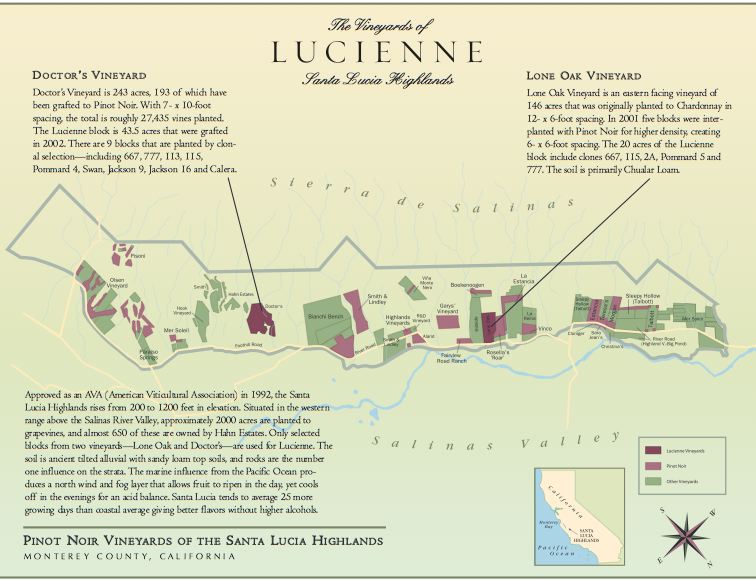 The winemaker since the inaugural Lucienne release has been Paul Clifton, the Director of Winemaking and General Manager at Hahn Estates. Paul grew up in the Monterey Bay area and came to wine from a firefighting career. In 1996, his pursuit of becoming a professional winemaker began at Bernardus Winery in Carmel Valley where he was mentored by Don Blackburn, a well-known Pinot Noir vintner who has passed away. Paul worked his way up the ladder at Bernardus, from cellar rat to cellarmaster. In 1999, he became the assistant winemaker at Byington Winery in the Santa Cruz Mountains. To further his knowledge of cool climate viticulture, he attended Lincoln University in New Zealand and received a postgraduate degree in viticulture. Upon returning to the United States in 2003, he began working at Hahn Estates with winemakers Adam Lazarre and Barry Gnekow. In time, Paul became the Director of Winemaking at Hahn Estates and brought the winery’s Pinot Noir program into prominence. His current winemaking assistant is Greg Freeman. Paul is rather shy and unassuming and he underplays his considerable accomplishments. A peek inside his personality is revealed in the “Winemaker Up Close & Personal” feature at the end of this issue. The consistent winemaking processes in crafting the Lucienne vineyard designates are fermentation in small open-top tanks, an initial 3-day cold soak, gentle manual punch downs, and free-run press off the skins. The four Lucienne Pinot Noirs reviewed here are available from the winery’s website store at www.luciennevineyards.com. The wines can also be tasted at the Hahn Estates tasting room in Soledad which is open daily. These are beautifully crafted wines that will find fans among those who seek out well-endowed and ripe-fruited Santa Lucia Highlands Pinot Noir. The wines strut out plenty of charming, sweet fruit propelled by modestly high alcohols, a reflection of the 2012 vintage.
2012 Lucienne Smith Vineyard Santa Lucia Highlands Pinot Noir 14.5% alc., pH 3.80, TA 0.63, 1,149 cases, $50. This vineyard is south of Doctor’s Vineyard and at a higher elevation is less affected by early morning fog than any of Hahn’s vineyards. Clones are Calera, Jardini and Mt. Eden. Harvest Brix 26.2º. Aged 12 months in 42% new French oak barrels. · Moderately light reddish purple color in the glass. Very appealing scent of dark red strawberries, blackberries, black currant and spice are echoed on the palate which is very polished. This wine is silky smooth and seductive, with impeccable oak integration. The finish is the most generous and lengthy of all the four 2012 Lucienne Pinot Noirs. I would rate it even higher, except for a slight sense of heat on the finish. Score: 92
2012 Lucienne Doctor’s Vineyard Santa Lucia Highlands Pinot Noir 14.5% alc., pH 3.78, TA 0.63, 640 cases, $50. This vineyard consistently produces the most robust fruit that translates into wines that show intense dark fruit flavors and significant tannins. Clones are Jack 16, 777 and 667. Aged 13 months in 50% new French oak barrels. · Moderately deep purple color in the glass. The initially shy nose becomes more exuberant over time offering aromas of dark berry compote, black cherry, black currant and oak-driven toast and vanilla. The wine offers the most intensely sappy fruit in the 2012 lineup, with pleasing flavors of blackberry, black cherry and black currant. The tannins are well matched and supportive, and the mouthfeel is smooth and accommodating. The wine becomes more expressive over time in the glass. When tasted two days later from a previously opened and re-corked bottle, the wine was still aromatic with plenty of slightly spicy and smoky berry and cherry fruit, and a silken smooth texture. Score: 92
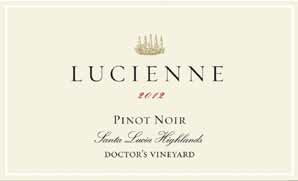
2012 Lucienne Lone Oak Vineyard Santa Lucia Highlands Pinot Noir 14.5% alc., pH 3.76, TA 0.60, 588 cases, $50. Clones are 667, 115 and Pommard 5. Harvest Brix 27.5º. Aged 13 months in 40% new French oak barrels. · Moderately light reddish purple color in the glass. Comforting aromas of cherry, strawberry, red currant, wilted rose petal and sandalwood. A bit lighter in weight, featuring redder fruits including strawberry, cranberry and cherry. Smooth in the mouth and on the finish, with plenty of oak at play in the background. Score: 90
2012 Lucienne Hook Vineyard Santa Lucia Highlands Pinot Noir 14.5% alc., pH 3.85, TA 0.60, $50. The first Hook Vineyard designate.The farthest south of Hahn’s four SLH vineyards. Clone 115. Aged 14 months in 40% new French oak barrels. · Moderately light reddish purple color in the glass. Hi-tone aromas of black cherry, strawberry, cardamom spice, and subtle smoky oak. Mid weight flavors of red and black cherry, raspberry, plum and red licorice really explode over time in the glass. A riff of smoky oak adds support, the tannins are nicely balanced, and the mouthfeel is silky. Plenty of sweet fruit surfaces on the generous finish. Still flavorful and soft on the palate the following day from a previously opened and re-corked bottle. Score: 91
Formaglini VineyardsI recently discovered a nearby Oregon winery owner residing in Orange County, California who has sought success with Oregon Pinot Noir. David de Lancellotti is a very animated and passionate wine lover who has an interesting story to tell behind his inaugural release of 2012 Formaglini Vineyards Chehalem Mountains Willamette Valley Pinot Noir. David grew up in a traditional Italian immigrant family living in Orange County where wine was always on the dinner table. As he pursued a career in the tech industry and raised a family, he maintained a close relationship with his Italian heritage, visiting Italy annually with his family. There he developed a respectful friendship with a number of Italian winemakers, and acquired expertise in Italian wines and wine growing practices. On a visit to the Willamette Valley to see his brother Paul, who has had success with his own de Lancellotti Family Vineyards, David spied an abandoned Christmas tree farm for sale in the Chehalem Mountains. It was adjacent the well-known Calkins Lane Vineyard owned by Adelsheim Vineyard, and seemed like an ideal site for growing Pinot Noir. David saw more than a potentially producing vineyard, viewing it as a family project able to provide a legacy connecting his past with the future. He planted his first 3 acres of Pinot Noir there in 2007 in what is known as the La Quercia block. For his winery, David chose the name Formaglini, the maiden name of his paternal grandmother who was from La Quercia, Italy, a small village south of Bologna populated with many native oak trees. La Quercia translates to oak in Italian. It followed that David created a winery logo containing a leaf from an oak tree to honor his family tradition and his Italian roots.
 Although David is a professed lover and collector of Italian wines, he has also been drawn in by Pinot Noir. He told me, “I always look for a wine that balances minerality with tannins, acidity and texture. Oregon was an easy call because it is a world-class wine region where I can make this type of wine that I love.” David has not shed his Italian leanings completely because he has also planted Lagrein, the Italian red grape variety native to the valleys of South Tyrol in northern Italy. Only tiny amounts of this variety have been planted in the Umpqua Valley region of Oregon, so this remains an intriguing experiment. The ideal 2012 growing season has resulted in remarkably good Oregon Pinot Noir, boosting the interest in the introductory Formaglini Vineyard Pinot Noir release. David waited five long years before releasing his first wine since the harvested grapes did not meet his stringent quality demands until the 2012 vintage. His vineyard is biodynamically and dry-farmed under the direction of noted Oregon viticulturist Sterling Fox, but David plays an active role in the vineyard management, traveling to Oregon every three to four weeks from his home in Santa Ana to walk the vineyard land and kick some dirt. He is also intimately involved in the winemaking. The planted clones are 777, “828,” 115 and Pommard, which are tightly spaced (2,000 vines per acre). All clones are blended in the inaugural Pinot Noir release. Visit the informative website at www.formaglinivineyards.com for more information on David, his family’s history, his vineyard, and his future plans to modestly increase production. The wine is distributed locally in Santa Ana, California, to some retailers in Oregon, and is sold on the winery’s website.
2012 Formaglini Vineyards La Quercia Block Chehalem Mountains Willamette Valley Pinot Noir 12.5% alc., 100 cases, $42. Aged in 50% new French oak barrels. · Moderately deep Bing cherry color in the glass. This medium weight wine has plenty of concentration to satisfy, with both a fruity (black raspberry, boysenberry) and savory (herbs, bramble) component. The nose draw you in with bright aromas of dark berry compote, forest floor and spicy herbs. The wine is elegant, with a silky texture, supple tannins, and enough juicy acidity to make you want to take another sip. It holds up nicely over time in the glass, and finishes with good exuberance. Score: 90
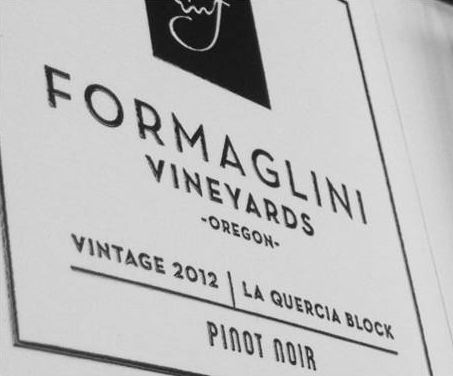
Sips of Recently Tasted Wines
2010 COBB Coastlands Vineyard Sonoma Coast Pinot Noir 13.5% alc., 175 cases, $75. From a 14-acre vineyard near Occidental. A variety of selections and rootstocks. · Moderately light garnet color in the glass. Nicely perfumed with aromas of dark cherry reduction sauce and sandalwood. On the lighter side, this cherry-driven wine is very elegant and charming. There is some cedary oak overlay and a slightly confected cherry theme on the finish. Score: 89
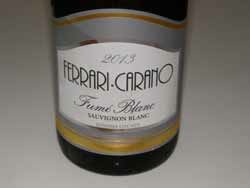 2013 Ferrari-Carano Fumé Blanc Sonoma County Sauvignon Blanc 13.8% alc., pH 3.32, TA 0.59, 85,000+ cases, $14, screwcap. A signature wine from Ferrari-Carano that is a blend of Sauvignon Blanc grapes from Dry Creek Valley, Alexander Valley and Russian River Valley. Whole cluster crushed and pressed into stainless steel tanks for 48 hours of cold settling. The juice is either transferred to stainless steel tanks or older French oak barrels for fermentation. The wine in barrels is sur lie aged and stirred every week for 1 month. · Pale yellow-gold color and clear in the glass. Inviting aromas of peach, kiwi and lemon lead to crisp flavors of white peach, pear and lemon drop. A nicely balanced wine with good staying power on the palate, and a sleek finish that offers notes of peach, apple, tropical fruits and subtle nutty oak. Very easy to like with no imposing grassy character found in some Sauvignon Blanc wines. I put the opened, unused wine in the refrigerator and it was still singing several days later. Widely distributed. Score: 90
2000 Kalin Cellars Livermore Valley Semillon 13.8% alc., $30. Current release. Sourced from old vines planted in the 1880s from Chateau d’Yquem cuttings at the Wente Estate Vineyard in Livermore. 75% Semillon and 25% Sauvignon Blanc. Aged 10 months in French oak barrels. · Golden yellow color in the glass. Appealing aromas of pear, butterscotch and vanilla custard, with equally inviting flavors of ripe tropical fruits, apricots, roasted nuts and honey. The mouth feel is viscous and sensuous. Fully mature, and drinking at its apogee, this dry wine can easily age another 10 years. Pair with spicy food or richer sauced fish and shellfish dishes. Score: 90
2013 Panther Creek Willamette Valley Pinot Gris 13.5% alc., 1,500 cases, $18. 100% stainless steel with no malolactic fermentation. Olsen, Wildewood and Kramer vineyards. · Light golden yellow color with a slight orange rim tinge in the glass. Shy aromas of yellow apple, pear and nuts. A pleasing food wine with modestly weighted flavors of pear, apple, and white peach. Smooth on the palate with a good cut of acidity. Score: 88
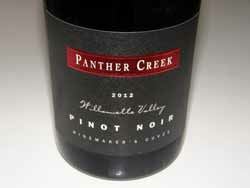 2012 Panther Creek Winemaker’s Cuvée Willamette Valley Pinot Noir 13.5% alc., 1,290 cases, $30. A vineyard blend from Van Duzer and Amity vineyards. Aged 9 months in 30% new and 70% neutral French oak. · Moderately deep reddish purple color in the glass. Riper fruited with aromas of dark red cherries and berries, a little earthy flora, and even a touch of prune. Impressive attack and finish of dark red cherry, pomegranate and plum flavors. Well-structured with a suave presence and adept oak management. Finishes with a good charge of black cherry fruit. Score: 89
2011 Panther Creek Reserve Willamette Valley Pinot Noir 13.5% alc., 749 cases, $50. A barrel selection consisting of 72% Lazy River Vineyard and 28% Freedom Hill Vineyard fruit. Aged 18 months in 30% new and 70% neutral French oak. · Light reddish purple color in the glass. Aromas of red pie cherries, strawberries and spicy oak lead to an elegant, even delicate wine, offering flavors of red fruits, spice and oak. Reflects the vintage, with a paucity of fruit stuffing and ripeness. Score: 88
2010 Panther Creek Shea Vineyard Yamhill-Carlton Willamette Valley Pinot Noir 13.5% alc., 197 cases, $50. Aged 16 months in 30% new and 70% neutral French oak barrels. · Moderately light reddish purple color in the glass. Nicely perfumed with scents of black cherry, spice and a touch of caramelized oak. The tasteful core of black cherry, black currant and black raspberry fruit is burdened by a heavy oak overlay with prominent flavors of smoke and tobacco. Discreetly concentrated with some finishing intensity. Score: 87
Note: I usually taste Paul Lato’s wines in March around the time of World of Pinot Noir. Since the event was in Santa Barbara this year, I didn’t make it north to Santa Maria Valley to see Paul. I decided to taste a few of the 2012 releases now.
2012 Paul Lato “Duende” Gold Coast Vineyard Santa Maria Valley Pinot Noir 14.3% alc., $65. Unfiltered. · Moderate deep red color in the glass. Initially very smoky on the nose and palate, fading over time in the glass. The aromas of black raspberry, cherry and strawberry are accented with a hint of Moroccan spice and smoke. Light to mid weight flavors of dark cherries and raspberries with a slight smoky undertone. The tannins are very suave, the wine is easy to drink, and there is an appealing cherry note on the moderately long finish. The following day when tasted from a previously opened and re-corked bottle, the wine was somewhat stemmy and herbal. I tried to like this wine, and revisited it several times, but it did not offer as much pleasure as I would like. Score: 89
2012 Paul Lato “Atticus” John Sebastiano Vineyard Sta. Rita Hills Pinot Noir 14.5% alc., $70. Unfiltered. · Moderate Bing cherry color in the glass. The scent of fresh berries is long and persistent and the slightest oak adds a compliment. Soft as an angel’s hair and very plush on the palate with mid weight plus flavors of spiced dark raspberry and blueberry. Oak provides just the right amount of seasoning, and the finish has some respectable length. The texture really stands out in this wine. Score: 91
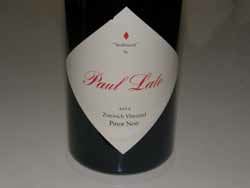 2012 Paul Lato “Seabiscuit” Zotovich Vineyard Sta. Rita Hills Pinot Noir 14.5% alc., $75. Unfiltered. · Moderately dark purple color in the glass. This wine is blessed with effusive aromas of cherry, plum, and a lash of oak vanillin. The charge of fruit is delicious with flavors of dark cherry pie glaze, Hoison sauce, and clove. Noticeable polish and balance with dry, sandy tannins creating textural interest. The amazing burst of fruit on the finish lasts and lasts and sealed the deal for me. Score: 93
2012 Paul Lato “Happiness” Hilliard Bruce Vineyard Sta. Rita Hills Pinot Noir 14.3% alc., $70. Unfiltered. · Dark reddish purple color with a garnet rim in the glass. Shy, but pleasant aromas of dark stone and berry fruits. Mid+ weight fruit core of blackberry, black grape and black currant flavors. A bit rustic, beefy and earthy, with modest tannins and some finishing length. The most robust and darkest fruited of the Paul Lato wines tasted on this day. Score: 91
2012 Paul Lato “Lancelot” Pisoni Vineyard Santa Lucia Highlands Pinot Noir 14.5% alc., $85. Unfiltered. · Moderate red color with purple highlights in the glass. Wines from this vineyard are usually broad shouldered but this offering is suave and modest in weight with aromas and flavors of cherry, raspberry and pomegranate. The wine is well-crafted with balanced tannins, a dreamy texture and some finishing burst of cherry fruit. My only nit is that the finish is slightly hot. After a day, the wine was much more expressive indicating it has a way to go to fully reveal itself. Give this wine another year or two in the cellar. Score: 91
 2012 Woodenhead Dolinsek Ranch Russian River Valley Syrah 15.0% alc., 75 cases, $40. I don’t review many Syrahs but two very good ones showed up in this issue. · Dark, dense purple color in the glass. Explosive aromas arrive over time including blackberries, boysenberries, spice, smoke and vanilla. Plush, velvety and fruity on the palate with a delicious sap load of purple berries accented with spice. Full-bodied and hedonistic, but balanced, with complimentary oak in the background and a smash mouth finish of great intensity. Score: 93
A New Wave of Outstanding Print Wine MagazinesWho says print is dead? Just when many magazines are being discontinued, newer, more sophisticated and informative print publications are appearing. Regarding wine, the standbys have been Wine Spectator, Wine Enthusiast, and Wine & Spirits.For my money Wine & Spirits offers the most interesting reading not burdened down by pages and pages of ads and lists of scored wines you never heard of or will never try. The newest issue of Wine & Spirits concentrates on the art and science of wine tasting and is very well composed. There is a new breed of wine publication that has grabbed my interest lately by offering accomplished writers, timely topics of interest, as well as in-depth articles of historical importance, and less emphasis on scored wine reviews. Following is a summary of the wine magazines that I can highly recommend, and ones that I keep on my bookshelf for reference.
Alquimie Now released is Edition Three of this superb publication. Published in Australia, but distributed worldwide, each edition is essentially a book of well over 160 pages with very little advertising clutter. As I noted back in April, Alquimie is both educational and philosophical, enticingly readable, beautifully photographed, and graphically designed with flair. Published four times a year under the direction of Editor-In- Chief Joshua Elias, Alquimie’s core of wine articles are the heart and soul of the magazine but there are other horizons of food and drink that are explored as well. In the latest issue, along with a superb story, “Cerasuolo di Vittoria - A Cherry in the Wilds of Siciliy,” about a trip to explore the wines of Siciliy, there is an article titled, “Roast for a Season, Drink for a Year,” that portrays acclaimed coffee enthusiast James Hoffman and his journey from office monkey to word barista champion. Every time I receive a new edition of Alquimie in the mail, I excitedly sit down with a glass of good Pinot Noir, and read my heart out. For me, the writing is more grounded and understandable than some of the esoteric ramblings in the English (UK) version of this genre, The World of Fine Wine. Subscriptions to Alquimie are $100 for four editions including worldwide postage and handling. Visit www.alquimie.com.au. ★ ★ ★ ★ ★
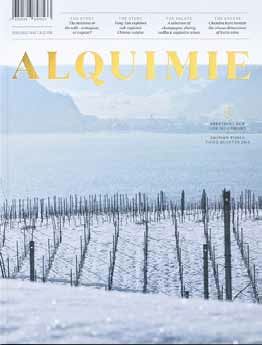 The SOMM Journal This journal is a reincarnation of the discontinued Sommelier Journal now owned by TPM Custom Publishing. The original journal suspended operations on October 25, 2013, and is now rebranded as The SOMM Journal. The new editorial board includes renowned wine writers, sommeliers and wine authorities including Editor-In-Chief Anthony Dias Blue and Editor-At-Large Randy Caparoso. The first issue was published in the spring of 2014. Although this is primarily a hospitality industry publication and covers artisan spirits, coffee, tea and food trends as well as wine, there is much to hold the attention of wine enthusiasts. The latest August-September issue has features on Sicily and its rising wine industry, the South West France AOP of Saint Mont, Jordan Winemaker Rob Davis, the wines of Crete, the wines of Ribera del Duero, vintners tackling challenges in South Africa, the women winemakers of Ferrari-Carano, and the determination of Texas vintners. Reports on SOMM camps, where groups of sommeliers spend dedicated time to certain wine regions, allows the reader to live vicariously through vivid reports. Consumer subscriptions are $52 per year. The digital format can be accessed free at www.sommjournal.com. ★ ★ ★ ★
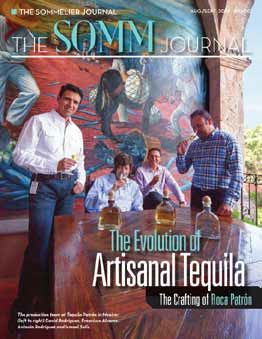 The Tasting Panel This wine journal is published by the same company as The SOMM Journal and the Editor-In-Chief is also Anthony Dias Blue. The majority of the articles are one page in length, covering a wide range of topics related to wine, beer and spirits. There are food and cocktail recipes, wine reviews by Anthony Dias Blue and others, and a fair amount of whole page advertising of alcoholic beverages. In the latest issue, I was most interested in the short articles related to wine that included features on Stony Hill Vineyard, Artesa winemaker Mark Beringer, Cuvaison winemaker Steve Rogstad, and Sanford winemaker Steve Fennell. Consumer subscriptions are $36 per year. The digital format is available free on the website at www.tastingpanelmag.com. ★ ★ ★
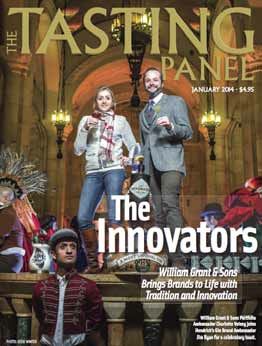 Other print wine publications I can recommend include Oregon Wine Press (★ ★ ★ ★) and The World of Fine Wine (★ ★ ★ ★ ★). There is one relatively new online wine magazine worth mentioning called Grape Collective at www.grapecollective.com. Weekly emails offer articles from a host of contributing writers including Senior Editor Dorothy J. Gaiter who conceived and wrote The Wall Street Journal’s wine column, “Tastings,” from 1998 to 2010 with her husband John Brecher. The online journal tells the stories behind the bottles and allows readers to buy the wines that are written about right on the website: a mixture of journalism and commerce. All wines covered have to be available for purchase by Grape Collective from a wholesaler. I recently read with interest an article about the women winemakers of Burgundy. ★ ★ ★ ★
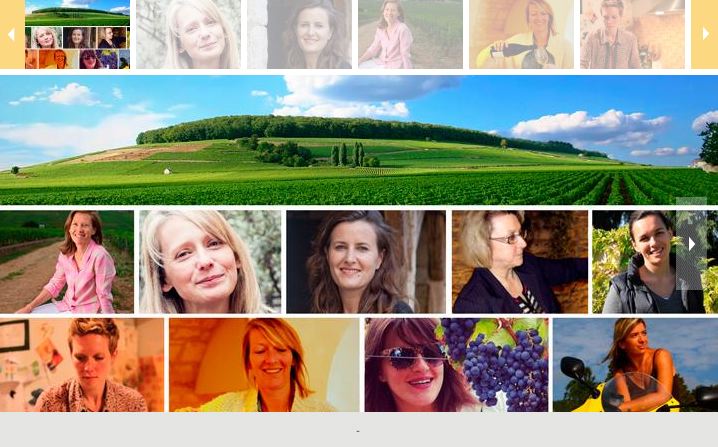
Pinot BriefsOregon Pinot Noir Tops All Other Varieties in Price According to Wines & Vines, the 2013 Oregon Vineyard and Wine Production Census, indicates that statewide growers received an average of $2,252 per ton in 2013 with Pinot Noir bringing in the highest average price per ton of $2,655. Chardonnay is the state’s second most expensive grape but some Chardonnay grapes have demanded more than Pinot Noir. The article points out that at 2 to 3 tons per acre, and at an average contracted price of $2,655, the risk is “breaking bad.” Terracotta-fermented Wines in Oregon Read an excellent report on ceramicist and winemaker Andrew Beckham of Beckham Estate who is leading a revival of interest in fermenting and aging wines in terracotta amphorae. I have alluded to his project a few times in recent issues but the article by Katherine Cole goes into more detail. Visit www.oregonlive.com. Wine that is Badly Kept Ages Four Times Faster An Italian study was reported at www.thedrinksbusiness.com (August 11, 2014) in which scientists placed 400 bottles of Sangiovese wine in both a professional working wine cellar with a strictly regulated temperature and another in conditions that simulated the normal home environment. The wine kept “at home” was warmer overall and its temperature varied more. The researchers found that small differences in temperature can speed up chemical reactions associated with wine aging. They found that at six months under “at home” conditions, the wine was about as aged as a bottle stored for two years under proper cellar conditions. In other words, the home-stored wine aged about four times faster. The wine stored under “at home” conditions had fewer antioxidants and less red color as well as an inferior flavor. No Relationship Between Wine Price and Enjoyment An article by Robert H. Ashton appeared in the most recent issue of the Journal of Wine Economics. This paper provided evidence that a significant number of wine consumers do consider price a useful clue to quality. Four blind tastings of 2006 red Bordeaux and 2009 white Burgundy with a price range of $20 to $119 was conducted, in which members of a wine club rated their extent of enjoyment of each wine. In three of the tastings, there was no relationship between price and enjoyment, while in the other the relationship was negative. At least among this group of wine club members, they did not find enjoyment to increase with price. Inundated with New Wine Releases This time of year I have to really budget my money because my email is flooded with fall release offers and as most of you hopelessly devoted pinotphiles know, it is hard to resist ordering everything. I already have way too much wine to drink in my lifetime, but the lure of a new release is irresistible. When I see the wording, “Order the whole allocation,” it sends shivers up my spine, makes the hair on my neck erect, and I begun to shake like a leaf on a tree. Remember that allocation is a relative term, and you can more often than not obtain more bottles of a wine if you request it. The best advice I can give you is to cut up your spouse’s Nordstrom card, put your kids in public school, refrain from buying a new car for at least 10 years, stop shopping at Whole Foods (Trader Vic’s is a more economical substitute), and never, ever, ever, under any circumstances tell your spouse how much you are spending on wine. Have the wine shipped to your business, or preferably, to a wine locker. Gradually introduce your spouse to great Pinot Noir (don’t reveal the price), and once you have secured her love for the heartbreak grape, she will easily turn her back on $10.99 bottles of Pinot Noir at the supermarket. Just remember that you can always justify your Pinot Noir buys by knowing that great Pinot Noir in moderation is good for your health and sanity, and great wine that you drink defines you as a person. Disposable Breathalyzers from Akers Bioscience The BreathScan® is a convenient, disposable, yet accurate measure of blood alcohol (BAC) levels. The units are in wide use in Europe and all drivers in France are required by law to carry them in their cars. The single-use devices are about three inches in length so handy to stick in the glove compartment or your purse or pocket. They can be bought individually ($3.50) or in packs of 4, 12, 25 or 100 and are but a few dollars each. To test yourself, you simply crack an internal ampoule of reagent crystals which change color from yellow to blue-green in the presence of breath alcohol. After blowing into the tube, the results are available within two minutes. Units are sold to specify BAC percentage of .02%, 05% or 08%. The breathalyzers are officially certified as an alcohol screening device by the FDA. A BreathScan® Pro is also available that gives a quantitative BAC. Visit www.akersbioscience.com.
Winemaker Up Close & Personal: Paul Clifton, Director of Winemaking, Hahn Estates
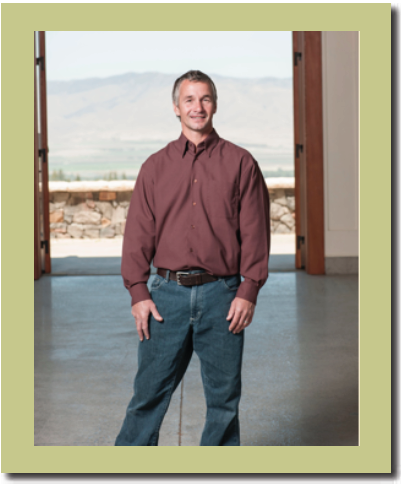 What Pinot Noir made by someone else I am drinking now: Testarossa. My desert island wine would be: The first wine that blew my mind - 1993 Bernardus Bien Nacido Pinot Noir. My talent that few know about: Raising two daughters, I can do a mean French braid. The thing I do religiously in my winery: Drink a beer every Friday with the cellar crew. The clothing item I wear most in my winery: Tee-shirt. The wine region other than my own where I would like to make Pinot Noir: Central Otago, New Zealand. The music I am listening to: Slightly Stoopid, Ozomatli. I like to relax by: Escaping to the western side of the Santa Lucia Mountains to the Big Sur Coastline - no cell, no internet - magical. If money were no object, I would: Invent and mass produce solar powered cars and then give them away free. If I wasn’t a winemaker, I would be: A firefighter. |